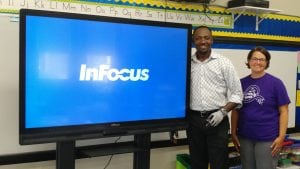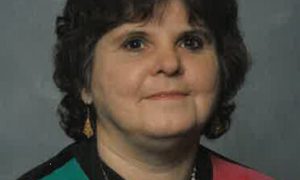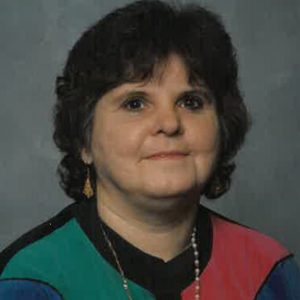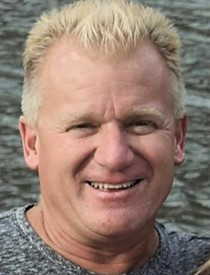
Pictured (l-r) are Ronald Sanvil, a technician for Entre Computers of West Springfield, and Lynn Collins, St. Mary’s second grade teacher, as the first interactive television is installed at the Elementary School. Over the course of the next several months, St. Mary’s will be working to raise the funds necessary to purchase and install interactive televisions throughout the school campus. (Photo submitted)
WESTFIELD – Nowhere has education changed more than at America’s primary and secondary schools. With the advent of interactive technology and large screen displays, notebooks, and high-speed communication links, every classroom can outdo the computer lab of the previous generation.
In education today, high performing classrooms are at a transition point. The school built around overhead projectors, chalk, and white boards is being replaced by interactive displays and devices for students and teachers.
Research shows that when teachers and students use interactive display technology, it helps to enhance education by bringing in resources that could only have been dreamed of by teachers a generation ago. When technology works, the result is a dynamic classroom experience with teachers able to switch easily, and on the fly, from showing an online resource—like the University of Colorado’s PHET science and math animated simulations—to local software showing a data analysis or a student’s screen with the answer to the problem.
Over the past decade, the biggest change in sourcing teaching materials has been the Web, which today is like an educational cornucopia, overflowing with primary and secondary materials. It has everything from Martin Luther King speeches to tutorials on Shakespeare’s plays. The most popular classroom use of the Web is putting online resources for research directly into the hands of students. The second biggest use is for curriculum which would otherwise not be available to students. This is especially true for small schools with small class sizes.
High performing schools have overwhelmingly adopted wireless technology as the preferred method of streaming a teacher or student’s screen so the whole class can see it on the classroom’s projector or large display; using tools including Google’s Chromecast and Apple’s Air Play. Many schools still use old-school cables (like HDMI or VGA) to share their screens with the class and are, therefore, tied to the projector or front desk. The teachers who use wireless, on the other hand, can roam about the class while still transmitting video to the large screen and controlling the content from a remote device.
Research has shown that successful Catholic schools have implemented a “blended learning initiative” which involves leveraging the Internet to afford each student a more personalized educational experience, including increased student control over the time, place, path and/or pace of learning. This is especially critical to schools with relatively small class sizes, such as the STM schools. Blended learning combines a rational bricks and mortar educational experience with the on-line learning resources available on the Internet.
In an age when everyone carries around the equivalent of a supercomputer that’s tied into all the media and data in the world, the result in the classroom is a more engaged student body, stimulated and ready to learn.
The completion of this educational technology implementation plan will assure that technology is embedded throughout all of the STM curriculum standards. Digital literacy and technology skills support high curriculum standards and build the strong educational foundation for both academics and 21st century employment skills, while integrating related skills such as communication, critical thinking, creativity and collaboration skills.
Earlier this year several interested STM supporters were successful in raising over $ 28,000 for the engineering and installation of a wide area network (WAN) fiber optic network which supports high speed internet (Wi-Fi) throughout the STM campus, including the Church, rectory and parish center. The project was funded over a 2 week period by 10 local business owners, who have or have had children attend STM schools and are committed to its continued success.
This work was recently completed by Whip City Fiber (Westfield Gas & Electric) during the spring school vacation in April and now provides the technological back bone for the acquisition and installation of the latest classroom technology needed to enhance the STM curriculum, especially needed for small class sizes.








